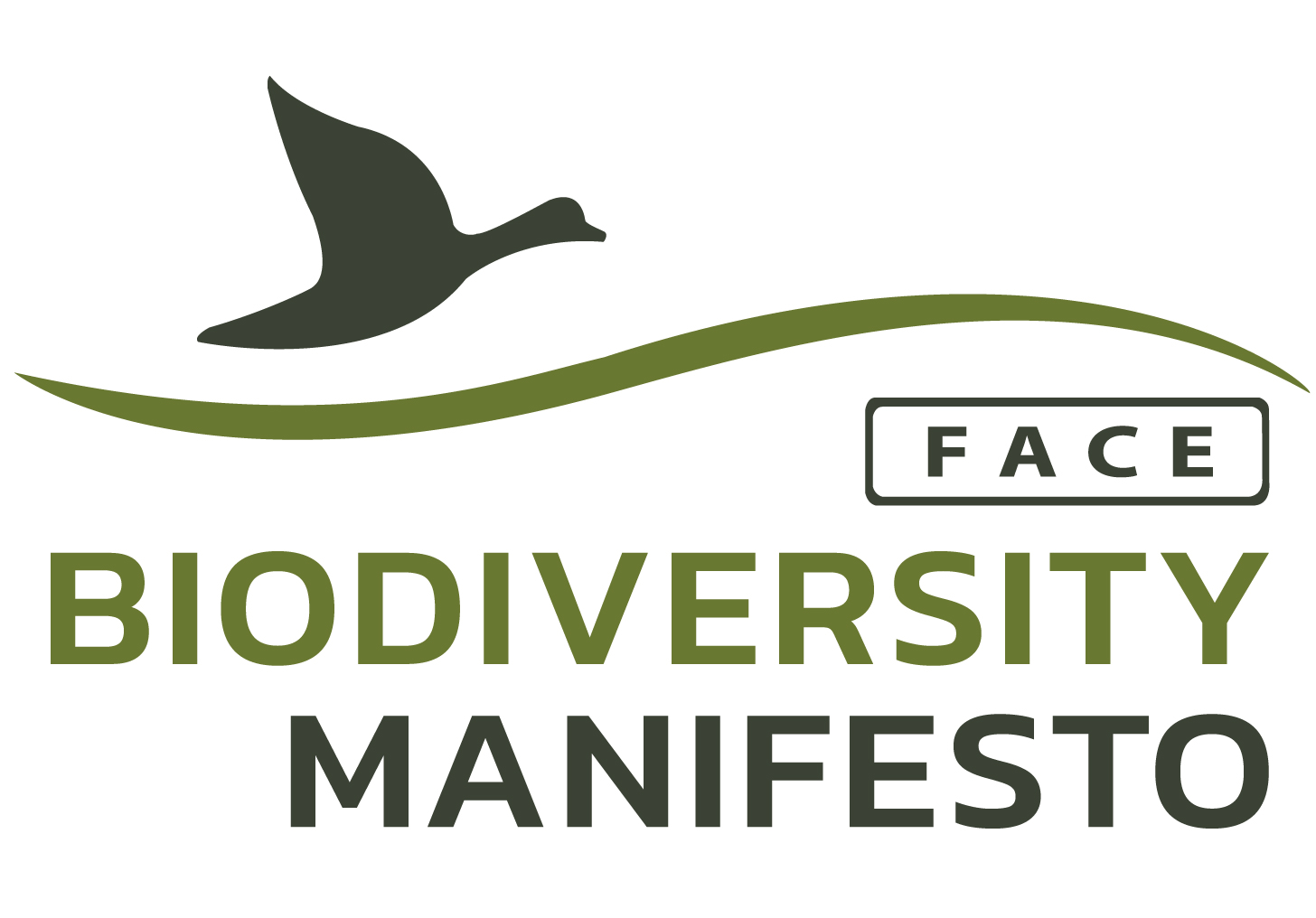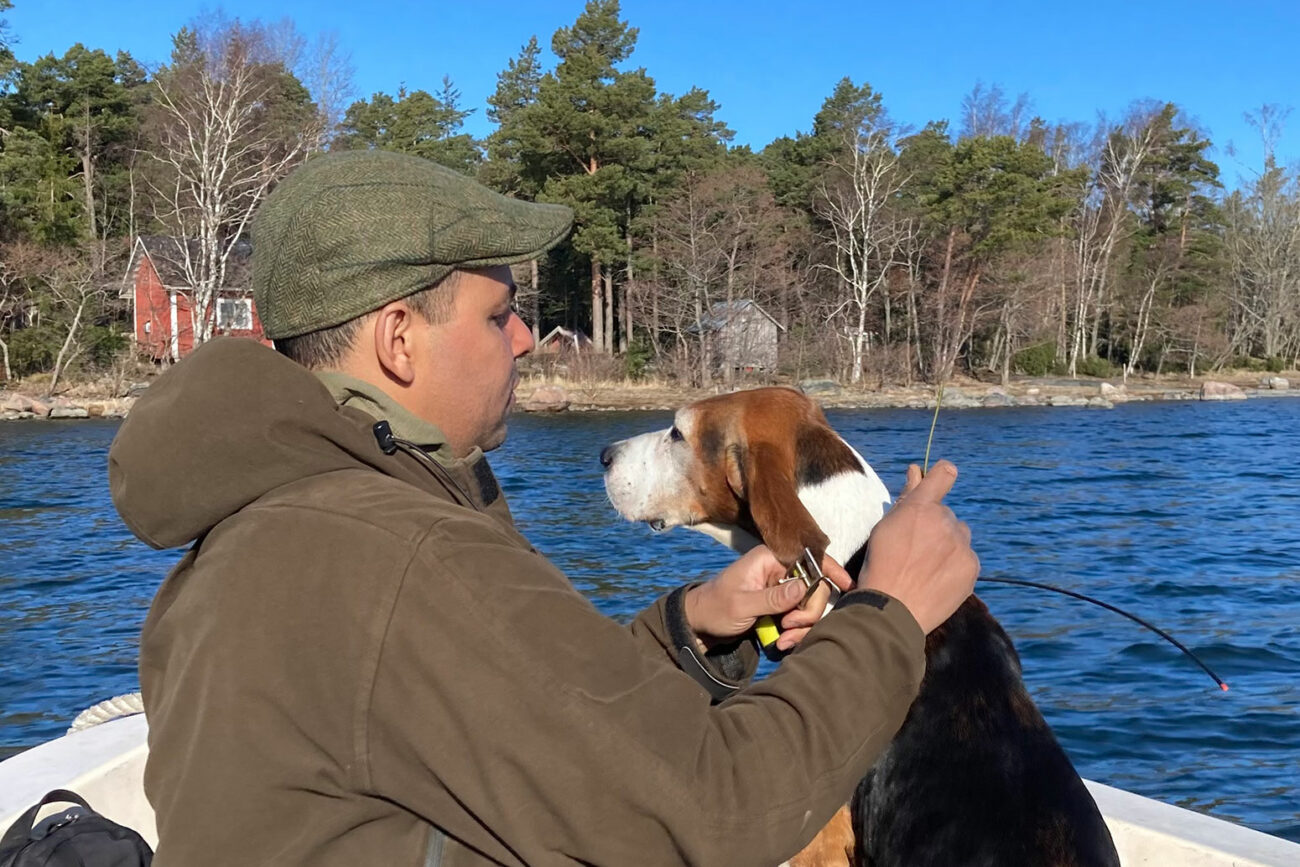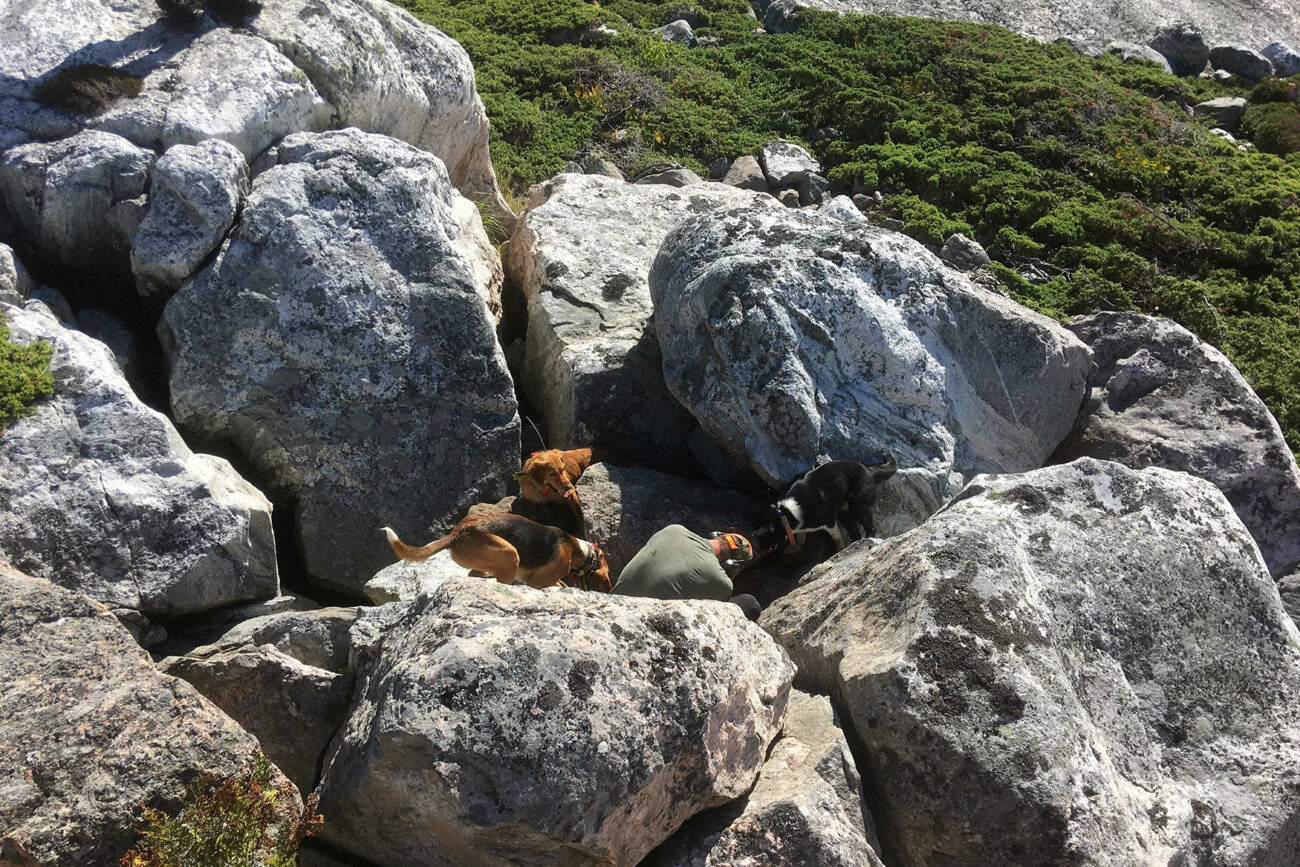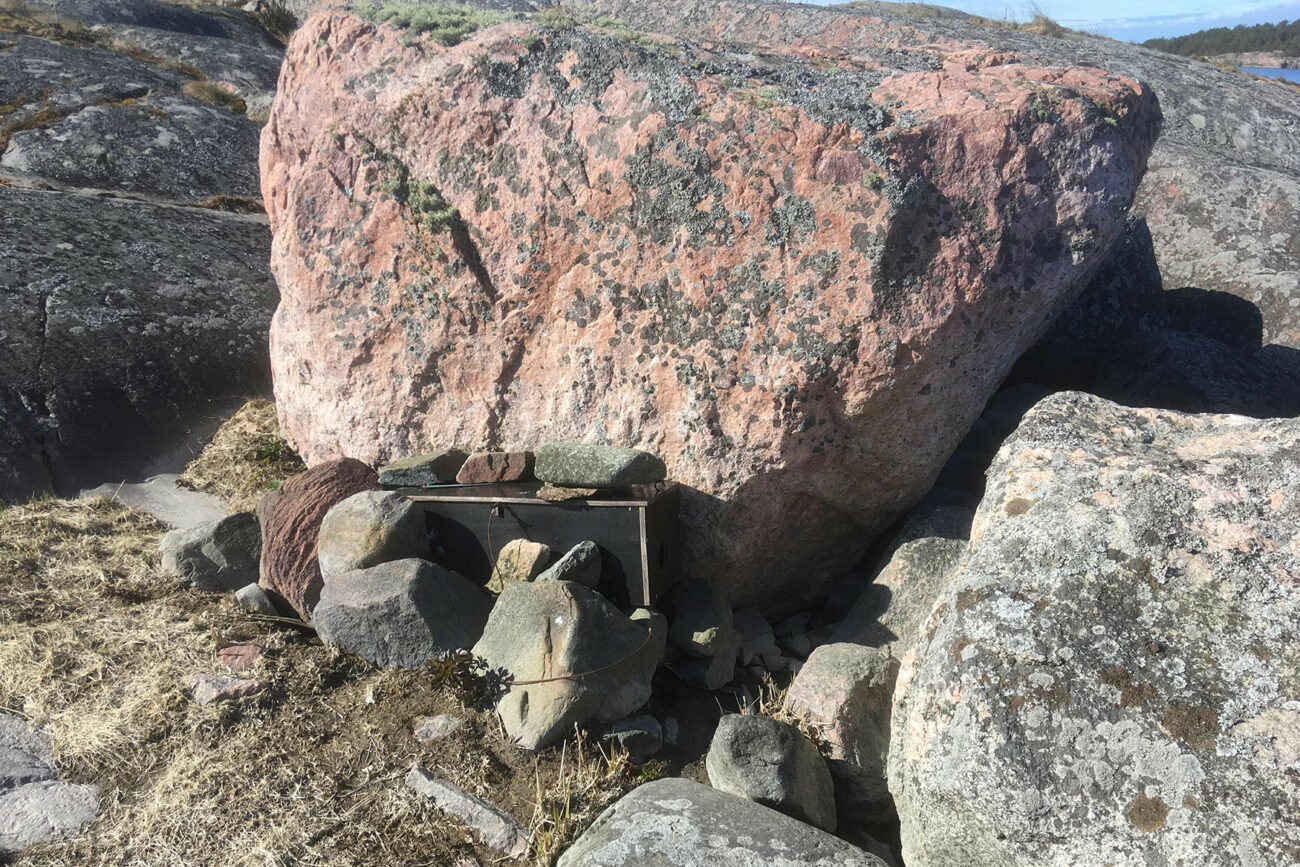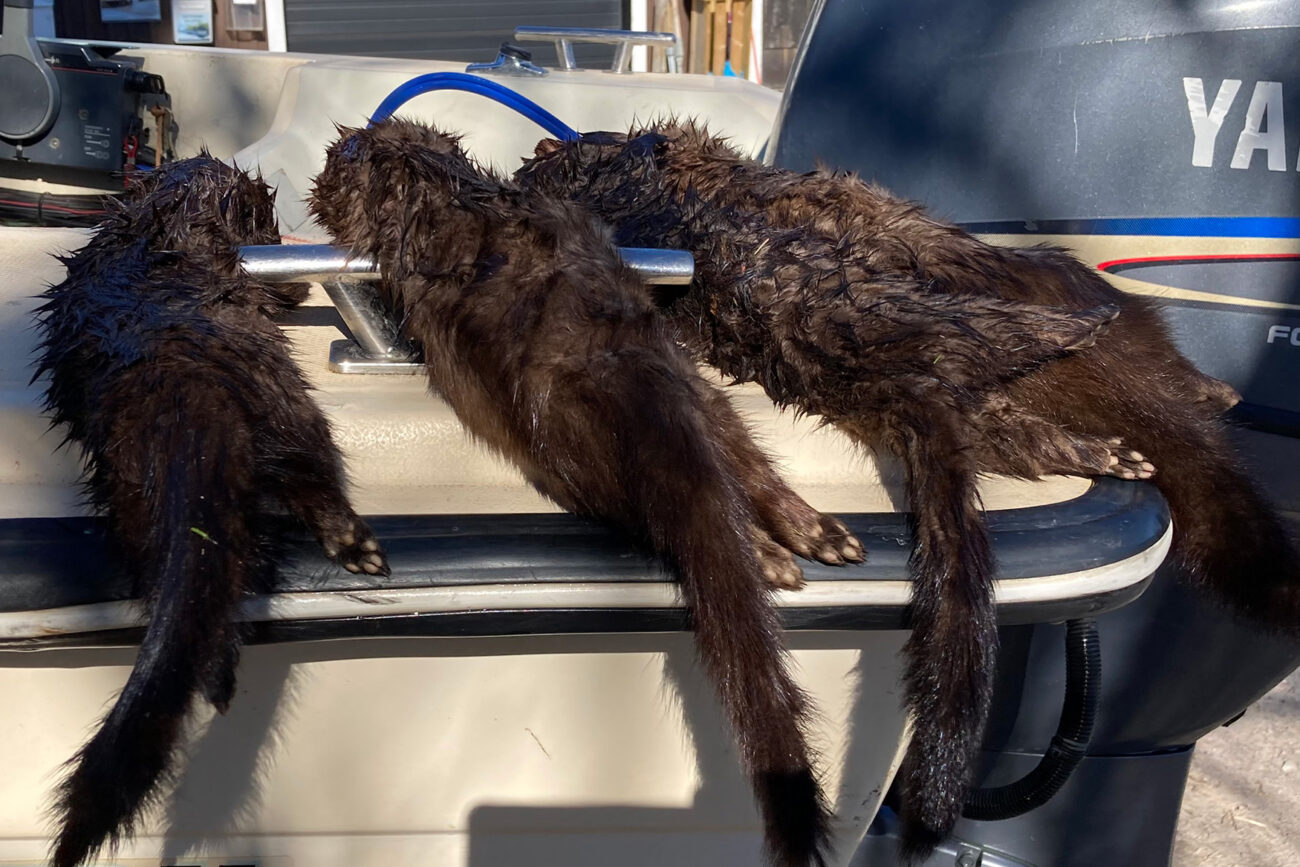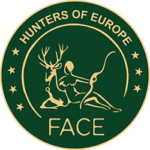Since 2018, the state of the Baltic Sea and archipelago nature has been monitored to track the population development and well-being of Common Eiders (Somateria mollissima). This project is a collaboration between the Nature and Game Management Trust Finland, the Universities of Helsinki and Åbo Akademi, and the Finnish Environmental Institute. In this project, the Nature and Game Management Trust Finland is responsible for controlling invasive alien predators—specifically the Raccoon Dog (Nyctereutes procyonoides) and the American Mink (Neovison vison)—which pose the greatest threat to ground-nesting waterfowl. By removing these two species from key nesting areas, the chances of nesting success for declining bird species are significantly improved. This work has become even more important with the return of the native predator, the White-Tailed Eagle.
The control and eradication efforts are carried out by experienced hunters. Working in the archipelago during spring and autumn is demanding and requires specialised skills and equipment. Two methods are used:
- Active control – Specially trained dog patrols locate the animals, which are then humanely dispatched.
- Passive control – Over 100 kill traps for mink are placed on islands and maintained by a professional trapper.
The Universities of Helsinki and Åbo Akademi, along with the Finnish Environmental Institute, conduct research on Eiders and assess the effects of invasive predator control on nesting success.
The project also raises awareness about the importance of biodiversity in the Baltic Sea, promotes understanding of the harmful effects of invasive alien predators, and encourages public acceptance of their removal.
It fosters trust in the effectiveness of ongoing conservation work for the Baltic Sea and archipelago ecosystems.
The Baltic Sea is a unique body of water where lake and marine species coexist. It is a diverse and dynamic environment, but one that is heavily impacted by human activity. Invasive alien species are a significant threat to its biodiversity.
The project benefits from private funding for IAS control from the Trust, and a combination of private and public funding supports the research.
POLICY RELEVANCE
EU Biodiversity Strategy for 2030 – The Strategy calls for more community-based actions led by citizens, businesses, or social partners to protect and restore Europe’s nature. This project is a strong example of how hunters are actively contributing to the implementation of the Strategy across Europe. It clearly demonstrates what can be achieved for biodiversity and how to deliver those outcomes.
European Commission – The EU Task Force on the Recovery of Birds produced (in 2025) a list of key actions involving habitat and non-habitat measures needed to support bird species with insecure EU conservation status. Predation management—covering both invasive alien and native predators—is recommended for 26 species, including the Common Eider. Hunters are directly contributing to these actions and have been doing so well before the recommendations were issued.
